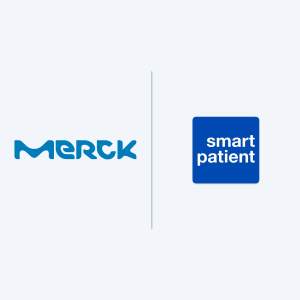Pharma Patient Engagement: 5 Factors for a Painless MLR Review
Content is the backbone to pharma’s patient engagement programs, but Medical, Legal, and Regulatory (MLR) reviews can make progress slow. Here are five important ways pharma and its partners can prepare content for review so the process can be stress‑free

- MLR reviews are essential for content published by pharma. Failing to adequately prepare for them can cause compliance issues for digital patient engagement programs
- Understanding key factors of MLR reviews can allow pharma and its partners to make the process as pain-free as possible
- Partnering with patient engagement platform providers with experience with MLR reviews can help pharma avoid compliance pitfalls
Medical, Legal, and Regulatory (MLR) reviews are inescapable necessities for much of the content pharma publishes. When it comes to digital patient engagement programs, for which content typically plays a crucial role, MLR reviews can be a pain point for pharma and its partners. A lack of understanding or preparation for MLR reviews increases the risk of compliance issues that can create additional work or even cause costly delays.
Here are 5 key factors for pharma and its partners to consider for pain-free MLR reviews.
5 Factors for a Painless MLR Review
1. Support everything with sources
The power of patient-facing content lies in both the ability to find an effective patient voice and deliver scientifically-backed information. We have previously published an interview with our editorial team explaining our process for crafting content that achieves both of these criteria.
However, when submitting content for MLR reviews, knowing that your content is evidence-based is not enough; reviewers need sources. To avoid delays, it is vital to provide your sources and ensure they are still available at the time of review.
2. Understand what is and what is NOT required
For many people we speak to, there is something of a fear factor regarding MLR reviews. People want to ‘play it safe’ and submit more than is required for a review. For example, we were once informed that screenshots of content would need to be submitted on every device a user might consume it on.
Not only is this wildly impractical and basically impossible, but it is also wholly unnecessary. While this is a rather extreme example, it highlights the need to understand the precise requirements of an MLR review. Doing so mitigates not only the risk of falling short of requirements but also of creating unnecessary work for yourself.
3. Make your content CMS & DAM compatible
Specialized content management and digital asset management systems such as Veeva’s Vault PromoMats are typically the portals used to submit content for MLR reviews. While it may seem like a simple task to upload content and other digital assets, such as images and PDFs, the software is more complex than many might think, and content can come in a variety of formats.
Experience in operating with this specialized CMS and DAM software can help avoid the need for reworking content and reduce the risk of unexpected compatibility issues.
4. Pre-review all content
Performing an in-house review of content before submitting it for an MLR review is perhaps the most effective way of avoiding compliance issues. Doing so can help catch mistakes or issues that would otherwise have gone unnoticed when submitting the content.
For the review to be worthwhile, however, those performing it must have a deep understanding of compliance criteria and be aware of the potential pitfalls.
5. Be available to reviewers
An often-overlooked element of MLR reviews is the communication between the reviewers and publishers. However, we have found that ensuring reviewers have the contact details of the most relevant people – and that those people are readily available – is essential. In many cases, issues that crop up in an MLR review can be solved quickly and effectively, but only if the communication is there.
MyTherapy: Pharma Patient Engagement Platform
Our experience in delivering effective and compliant content via our MyTherapy platform is one of the reasons companies such as Merck, Novartis, and Pfizer partner with us to offer digital support to their patients. In addition to content that is crafted with MLR reviews in mind, patient access, global scalability, and providing a product that supports users’ broad health needs are a few of the ingredients that combine to create successful patient engagement programs.
If you want to learn more about how you can use MyTherapy as your patient engagement platform, don’t hesitate to get in touch.





